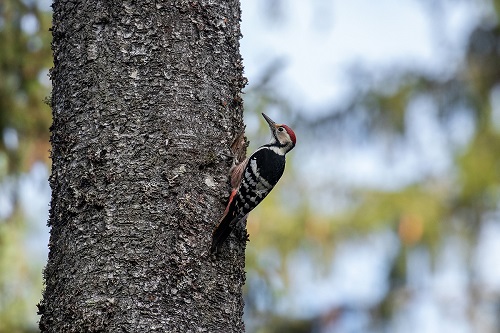The purpose of the Bern Convention is to protect all species of wild flora and fauna, as well as their habitats

The Bern Convention, which was concluded in Switzerland in 1979 and entered into force three years later, aims to protect all species of wild flora and fauna, as well as their habitats. Particular attention is paid to the protection of endangered species, including migratory species. The Bern Convention was the first nature conservation agreement to seek pan-European reach. However, some plant and animal species are put under special protection by the Bern Convention. Such species are listed in Appendix I (strictly protected flora species), Appendix II (strictly protected fauna species), and Appendix III (protected fauna species) of the convention. Annex IV sets out the prohibited means and methods of killing, capture, and other exploitation .
Originally, 20 parties signed the Bern Convention; by 2024, there were 51 signatories (including the European Union) [1]. Estonia acceded to the Bern Convention in 1992. Among the species strictly protected under the convention are several species that are quite common in Estonia, such as the bear, white stork, moor frog, and the lady’s-slipper orchid.
In addition to species protection, the Bern Convention also relates to protected areas
It is the responsibility of the countries party to the Bern Convention to establish so-called Emerald sites, which would form an ecological network of areas of special conservation value. Emerald is a network similar to the Natura 2000 network, primarily aimed at enhancing the protection of species and habitats in the countries party to the Bern Convention outside the EU (in EU countries, the function of the EMERALD network is performed by the Natura 2000 network established on the same basis). Emerald, together with the Natura 2000 network, is the world’s largest network of protected areas operating on a common basis.
The work of the convention consists of various stages. During the year, various working groups meet, where experts from different countries develop recommendations for decisions and provide input for more comprehensive guidance materials. For example, expert groups meet regularly on the following topics: plant protection, bird protection, alien species, large carnivores, etc. The documents approved by these expert groups are sent to the Standing Committee meeting once a year for a decision. The Standing Committee is chaired by an elected chairman, assisted by elected members of the bureau and, of course, by the convention secretariat.
In addition to working for the convention, the Group of Experts on Protected Areas and Ecological Networks of the Bern Convention also evaluates the work of Europe’s best protected areas. For species rich and well-organised protected areas, they recommend the award of a European Diploma of Protected Areas, approved by the Committee of Ministers of the Council of Europe. Only one area in Estonia has been awarded the European Diploma of Protected Areas – the Matsalu National Park. The Matsalu National Park was recognised in 2003 [2].
The Estonian body responsible for and coordinating the implementation of the Bern Convention is the Biodiversity Protection Department of the Ministry of Climate.
Last modified: 19.12.2024
____________________